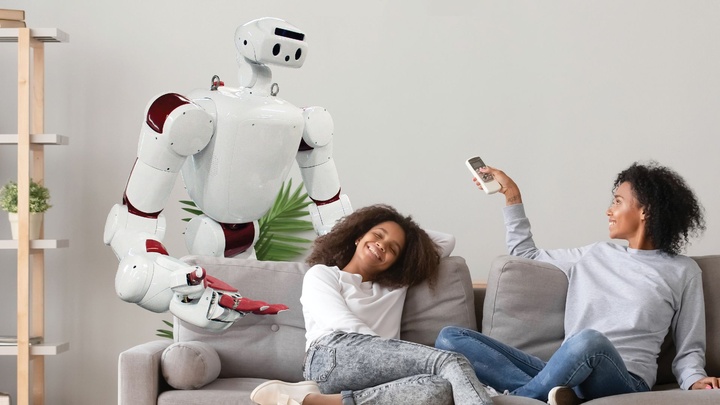Could AI robots play future roles as companions in care homes?
AI-powered robots, such as Nadine, with human-like gestures and expressions, are being hailed as potential companions for the sick and elderly.
Nadia Magnenat Thalmann, a robot expert from the University of Geneva and a creator of Nadine, believes that these robots could surpass human carers in terms of effectiveness. With a global shortage of caregivers, particularly after the COVID-19 pandemic, humanoid robots in care homes offer a promising solution.

AI robots like Nadine have the advantage of being available 24/7, providing constant companionship and assistance to care home residents. Unlike human carers who face time constraints, social robots can offer undivided attention, ensuring that residents receive support whenever needed. This round-the-clock care is crucial, given the increasing demand for caregiving services and the growing aging population.
Also Read: Meta’s Threads Is Here. What It Is and How to Use It
Nadine’s conversational skills and interactive capabilities make her an invaluable companion. By engaging in conversations, playing games, and even singing, Nadine establishes emotional connections with care home residents, promoting their well-being. Upgrades like the AI model GPT-3 have further improved Nadine’s ability to express complex concepts, enhancing her interaction with residents and addressing their cognitive and emotional needs.
The integration of AI robots does not seek to replace human carers but rather complement their efforts. Social robots and human carers can work collaboratively to provide optimal care. While human carers offer empathy, compassion, and critical decision-making skills, robots can provide consistent care, perform routine tasks, and enhance social interactions.
This collaboration allows human carers to focus on personalized care, while robots handle repetitive or time-consuming tasks.
AI robots like Nadine can significantly enhance the well-being of care home residents. Loneliness and social isolation are prevalent among the elderly, but robots can fill the void by providing companionship, stimulation, and emotional support.
Moreover, as the demand for caregivers exceeds the available supply, robots can help bridge the staffing gap. By delegating certain responsibilities to robots, human carers can allocate their time more efficiently and provide individualized care.
AI robots as companions in care homes hold immense potential for the future of caregiving. With their round-the-clock availability, enhanced conversational abilities, and the ability to address staffing challenges, robots like Nadine can play a pivotal role in supporting the well-being of the elderly.
By combining the strengths of human carers and social robots, care homes can provide comprehensive care that meets residents’ physical, emotional, and social needs. While challenges and ethical considerations remain, exploring and embracing the possibilities offered by AI robots in elderly care is imperative.

I am a law graduate from NLU Lucknow. I have a flair for creative writing and hence in my free time work as a freelance content writer.